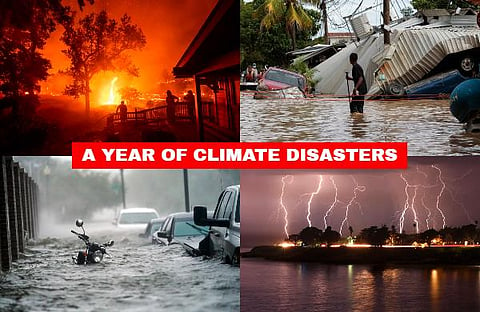

BHUBANESWAR: The use of artificial intelligence (AI) and deep learning in Weather Research and Forecasting (WRF) models can be a game-changer in improving forecast of heavy rainfall events in complex topographies of the North East, as per a latest study. It would facilitate better early warning and disaster preparedness in a region which is hit by extreme climate events every year, the study suggested.
“The optimal combination of high-resolution dynamical and AI models in WRF is essential to improve heavy rainfall event forecasting at the district scale, particularly over the orography (formation and features of mountains) driven regions of North East India to facilitate better early warning, and preparedness, and to develop disaster adaptation and mitigation strategies to minimise the losses,” the study says.
Titled Improvement in district scale heavy rainfall prediction over complex terrain of North East India using deep learning, the study was carried out by a group of researchers from the School of Earth Ocean and Climate Sciences and the School of Electrical Sciences at Indian Institute of Technology (IIT), Bhubaneswar.
The research published in IEEE Transactions on Geo-science and Remote Sensing, found the use of AI deep learning with dynamical models 77.9% accurate compared to just 38.1% by dynamical models in different categories of rainfall in the North East.
Prof Sandeep Pattnaik, associate professor at the School of Earth Ocean and Climate Sciences and corresponding author of the paper, said accurately predicting heavy rainfall events continues to remain a challenge in many parts of the country, especially in the hilly terrains of the North East, which are frequently associated with flash floods and severe consequences.
“Be it the flood in Assam in 2022 or the flash flood in Sikkim this year, extreme events are causing immense devastation. Though early warning and preparedness could help minimise this devastation, there are large uncertainties in forecast particularly from deterministic numerical weather models for the heavy rainfall events in the complex hilly terrain, which is a challenge,” Prof Pattnaik said.
Their study demonstrated a significant improvement in the prediction of heavy rainfall through the incorporation of both dynamical as well as AI deep learning model 'U-Net' at the district scale. Prof Pattnaik said the AI model achieved a Mean Absolute Error (MAE) of less than 12 mm, outperforming deterministic individual dynamical models as well as their ensemble forecast.
“As one model was not enough, we initially ran an ensemble of models but still the level of accuracy in dynamical models was just about 38%. However, adding AI and deep learning just doubled it,” he said.
The use of AI and deep learning helped in forecasting heavy rainfall of 150 mm and above three days in advance. Its forecast had more accuracy for an orographic region. “This is a major breakthrough,” he said.
The AI model accurately predicted the heavy rainfall events in sample areas over Barpeta, Kamrup, Kokrajhar and Nalbari districts in Assam, where heavy rains in June 2022 had led to massive casualties, extensive damage and huge economic losses affecting about 88 lakh population. The paper was jointly authored by Prof Pattnaik, Prof Niladri B Puhan, Omveer Sharma, Dhananjay Trivedi and Vivekananda Hazra.